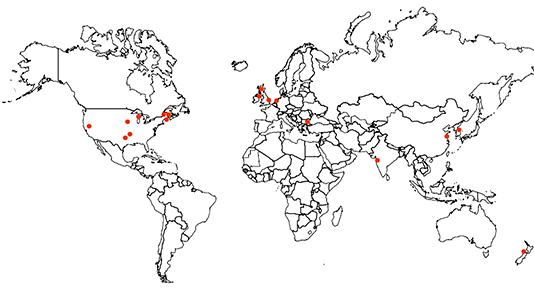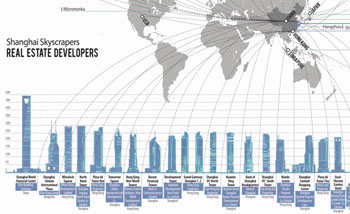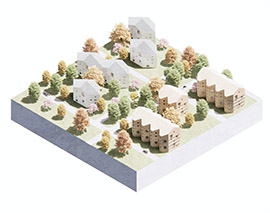|
|
Coming soon...
Dr. Bing Wang is Associate Professor in Practice of Real Estate and the Built Environment
at the Harvard University Graduate School of Design (GSD), and Director/Area Coordinator of
Master of Design (MDes) program, Real Estate and the Built Environment at the GSD.
Field Studies in Real Estate, Urban Planning and Design
Harvard Graduate School of Design, Field Studies Lecture, 2004-present  The Field Study course is designed to immerse students in the dynamics and complexities of
reality that both create and impact contemporary urban physical environments. The course
emphasizes the integration of design and development aspects of projects in order to respond
to real life market demand, political, financial and other constraints. The course also
explores how financial and capital market constraints affect planning and design and vice versa.
The Field Study course is designed to immerse students in the dynamics and complexities of
reality that both create and impact contemporary urban physical environments. The course
emphasizes the integration of design and development aspects of projects in order to respond
to real life market demand, political, financial and other constraints. The course also
explores how financial and capital market constraints affect planning and design and vice versa.
2013. New York City, New York. Planning and Urban Design: Hudson Railroad Yards
2012. Riyadh, Saudi Arabia. Design and implementation strategies to bring the world heritage village back to life
2011. Lowell, Massachusetts. Design and revitalization strategies for four parcels located in downtown
2011. Mumbai, India. Development strategies fo re-imaging Mumbai’s Backbay
2010. Istanbul, Turkey. Design of mixed-use project
2010. London, the U.K.. Design and revitalization efforts for Shoreditch district
2009. Boston, Massachusetts. Boston Bulfinch Triangle District
2008. Amsterdam, the Netherlands. Redevelopment of Zuidas – the new commercial cente
2008. Lee, Massachusetts. Redevelopment of the historic town center of Lee in the heart of the Berkshire Mountains
2007. Belfast, Northern Ireland, the U.K.. Alternative design and master planning for the 100 acre site at the Titanic Quarter
2007. Seoul, Korea. Master planning and development proposal for Eunpyeong New Town District
2007. Westwood, Massachusetts. Planning and Design solutions forTransit-Oriented Development near Westwood Station
2006. Pomona, Los Angeles, California. Redevelopment Strategies for the City
2005. Dallas-Ft.Worth, Texas. Creating a National park alliance
2005. Hanover, New Hampshire. Conservation land development project
2005. Newry, Ireland. Complex mixed use redevelopment on an island
2004. Derry, Southern New Hampshire. Conservation land development project
2004. Ketchum, Idaho. 76 acre residential development and small luxury hotel along river
2004. Milwaukee, Wisconsin. Brownfield redevelopment
2004. Shanghai China. Complex mixed use development project in the old part of Shanghai
2004. Wise County in the northwest Dallas-Ft.Worth, Texas. Regional planning and conservation plans for urban-edge
Real Estate and City Making in China
Harvard Graduate School of Design, Research Seminar, Fall 2012 Real estate has increasingly become a compelling force in the process of city making, one uniquely capable of leading and guiding multiple steps in the construct of vital urbanism: from conceiving an idea to constructing complex structures; from sourcing funding to creating master-planned communities; and from negotiating design forms to implementing urban public realms. A country like China is at once experiencing rapid urbanization while undergoing unprecedented transformation in the mechanism of city making: the forces of real estate and the shifting roles played by public and private sectors are constantly challenging conventional city building models, while defining and redefining their positions in the production of the built environment.  This course, conducted as a research seminar, focuses on the interdependence between real estate and city making. It addresses both theoretical and empirical investigations on the concepts and paradigms that have shaped and are still shaping real estate practices and their impact on contemporary Chinese cities. It analyzes emergent real estate and urban development strategies, their respective financing structures, underlying domain expertise and organizational hierarchy. Students will work independently and in teams on selected themes to identify critical forces in real estate development and investment: how key real estate players, domestic or international, have formed their central business strategies, interacted with capital markets and participated in the city form process to facilitate or drive the formation of the built environment; and how emergent private sector leaders are integrating human capital, financial capital, and design capital, to reshape the design, form and composition of China’s urban centers. With the investigative research framework set at the beginning of the semester, students will proceed to examine the city making process through the lens of real estate, in parallel with readings and class discussions, to anticipate the trajectory for contemporary real estate development, investment, and city making in China.
Read more...
This course, conducted as a research seminar, focuses on the interdependence between real estate and city making. It addresses both theoretical and empirical investigations on the concepts and paradigms that have shaped and are still shaping real estate practices and their impact on contemporary Chinese cities. It analyzes emergent real estate and urban development strategies, their respective financing structures, underlying domain expertise and organizational hierarchy. Students will work independently and in teams on selected themes to identify critical forces in real estate development and investment: how key real estate players, domestic or international, have formed their central business strategies, interacted with capital markets and participated in the city form process to facilitate or drive the formation of the built environment; and how emergent private sector leaders are integrating human capital, financial capital, and design capital, to reshape the design, form and composition of China’s urban centers. With the investigative research framework set at the beginning of the semester, students will proceed to examine the city making process through the lens of real estate, in parallel with readings and class discussions, to anticipate the trajectory for contemporary real estate development, investment, and city making in China.
Read more...
Building Design Typologies
Harvard Graduate School of Design, Lecture, 2007-present  Building typologies are fundamental instruments for constructing urban patterns and spatial forms. In the discourse of modern architecture and urbanism, the study of building typologies often functions as a useful methodology to interpret the condensed interrelationship between the physical attributes of building forms and spatial representation of social and cultural forces of a society. This course is, once again, taking this methodology, to offer a necessary perspective for the linkage between the physicality of design practice and the operational perspective of the market economy, specifically, the capital markets. It aims to understand how building typologies can serve as intersections of design prototypes, real estate products, and commodities of capital investment in the context of physical planning/design of urban form. It surveys four prototypes of real estate development/investments: residential (single- and multi-family housing), retail, office and mixed use and examines critical principles of different building typologies' design trajectories, compositional patterns, and ordering considerations, as well as the practicality of these physical attributes in the eyes of other active participants in the building environment, particularly developers and capital investors.
Building typologies are fundamental instruments for constructing urban patterns and spatial forms. In the discourse of modern architecture and urbanism, the study of building typologies often functions as a useful methodology to interpret the condensed interrelationship between the physical attributes of building forms and spatial representation of social and cultural forces of a society. This course is, once again, taking this methodology, to offer a necessary perspective for the linkage between the physicality of design practice and the operational perspective of the market economy, specifically, the capital markets. It aims to understand how building typologies can serve as intersections of design prototypes, real estate products, and commodities of capital investment in the context of physical planning/design of urban form. It surveys four prototypes of real estate development/investments: residential (single- and multi-family housing), retail, office and mixed use and examines critical principles of different building typologies' design trajectories, compositional patterns, and ordering considerations, as well as the practicality of these physical attributes in the eyes of other active participants in the building environment, particularly developers and capital investors.
The focus also will be on the physical patterns that the building types embody at the level of the urban context: the neighborhood, the street, and the site. The relationship between design aesthetics and economic viability of buildings will be central to the theme - how design creates value for investors, owners, and tenants of real estate, as well as the society at large, and how the architectural/urban morphological power contributes to the success of economic performance and operations as units of the market economy. Read more...
Global Leadership in Real Estate & Design
Harvard Graduate School of Design, Lecture, Spring 2014 In today’s constellation of increasingly connected urban centers, shifts in cultural preferences, design thinking, and spatial significations often reflect and parallel transitions in capital forces and economic realities, locally and across the globe. This course begins with the premise that globalization imposes forces and tensions that directly impact the formation and production of the urban built environment, and that future real estate and design professionals will have a competitive advantage if they are well-prepared to understand, navigate, and indeed lead amidst the vicissitudes of cultural and economic disequilibrium and disruptions of the global realm. The interrelationship between real estate, design, and their underlying production process are explored thus through thematic analysis of rational economic activities, real estate market performance, ownership structures, private and public joint venture, as well as the efficacy of public financing. Read more... |
© 2020 HyperBina Inc.